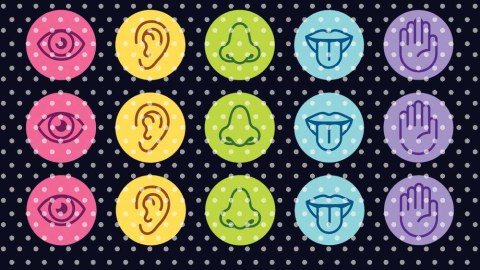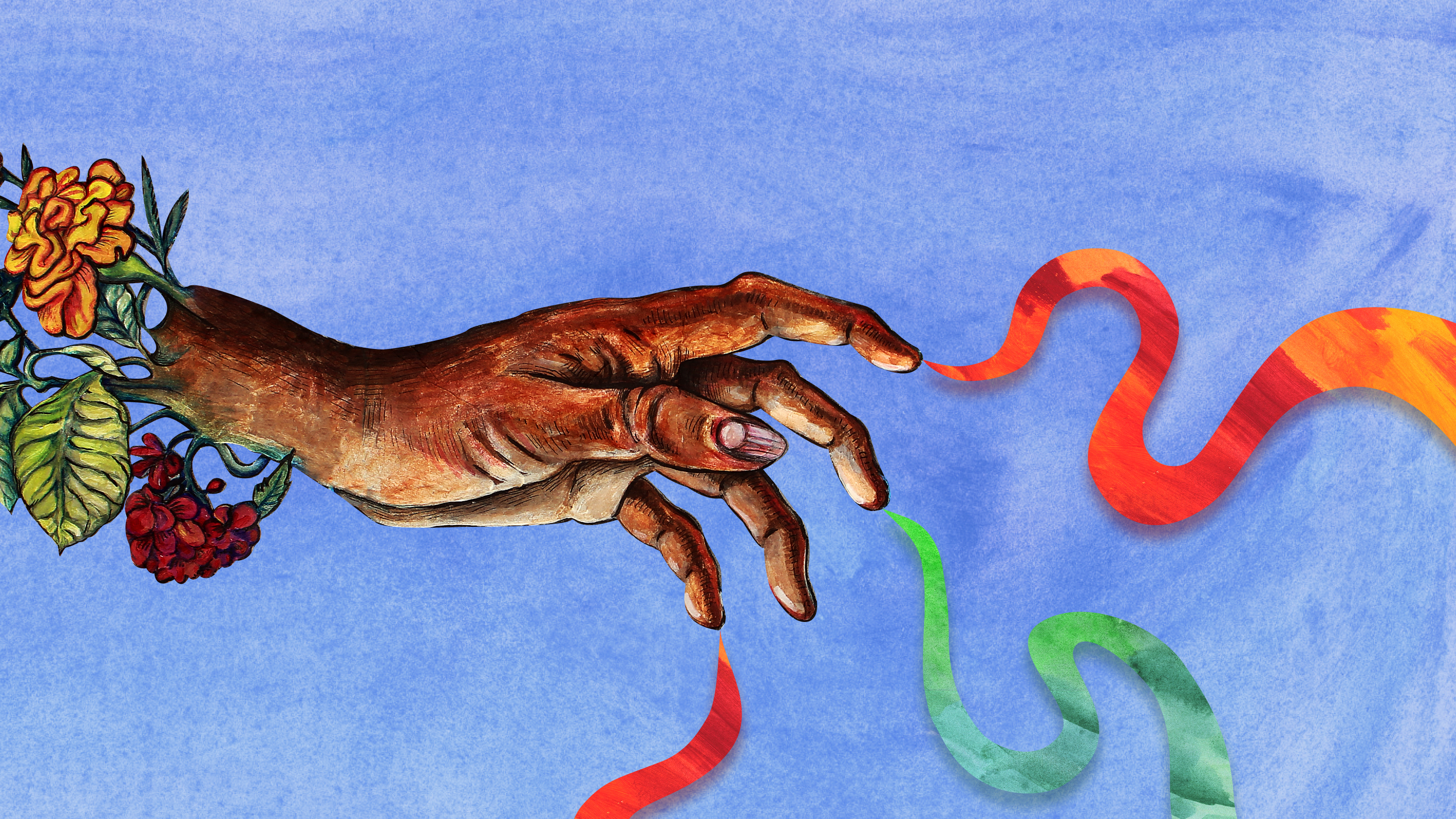Taste color and see sounds? Synesthesia may have a genetic basis.

Synesthesia is a condition where two of a person’s senses are intermingled. Either their cognitive or sensory pathways have some sort of overlap. It’s rare, affecting only 4-5% of the population, or about 1 in 2,000 people. Some experts however, believe about every 1 in 300 have some sort of variation of it, as there’s a wide variety of experiences one may place under the umbrella of synesthesia.
One person can say smell colors, while another tastes words, and another still visualizes sounds. For instance, linguistics professor Sean Day, PhD, at National Central University in Taiwan, told the APA’s Monitor on Psychology that “The taste of beef, such as a steak, produces a rich blue. Mango sherbet appears as a wall of lime green with thin wavy strips of cherry red. Steamed gingered squid produces a large glob of bright orange foam, about four feet away, directly in front of me.”
To date, there are 60 recorded varieties of synesthesia, a word that in Greek means “to perceive together.” But not all kinds deal with sensory perception. There’s also “conceptual synesthesia,” where the person can easily visualize abstract concepts, usually mathematical ones. These are experienced as projections which appear either inside one’s mind or outside, somewhere in the environment. There are also many who experience more than one type of synesthesia.
Grapheme-color synesthesia is the most common variety. Here, each letter of the alphabet or number corresponds to a particular shade or color. Autistic savant Daniel Tammet is one such synesthete. He’s a mathematical and linguistic genius whose ability helps him to organize and manipulate numbers and letters in startling and innovative ways.
He can do astronomical calculations in his head and has memorized Pi up to 22,500 places. So far, Tammet’s learned 11 languages, including one he’s created himself. The savant once learned an entire language in one week, in order to impress a TV show host who was interviewing him at the end of it. To Tammet, every single number has a particular shape, color, and texture, which helps him organize thoughts in a unique way. A few famous synesthetes include author Vladimir Nabokov and musicians Billy Joel, Duke Ellington, and Lorde.

Daniel Tammet is an autistic savant and synesthete who can calculate Pi up to 22,500 placesin his head. Credit: Getty Images.
Surprisingly, there seems to be tremendous consensus among those with synesthesia. The number five often appears red, for instance. Tuesday is the color orange. And among those with chromesthesia—where sight and sound combine, a C-sharp gives off a particular shade of blue.
Investigations into this bizarre and fascinating phenomenon has gone in and out of fashion since the late 19th century. What’s unfortunate is we have yet to understand the molecular basis for it. These days, scientists believe that by gaining more knowledge of the condition and how it works, we can develop a far deeper understanding of how our brain works, particularly in terms of perception. FMRI and positron-emission tomography scans of the brain, show that those with synesthesia have more activity in the sensory areas inside the cerebral cortex.
These scans also show unusual differences in brain structure and neural connectivity. As a result of this and the fact that the condition is more common among savants and those with autism, neuroscientists today believe that synesthesia is the result of unusual wiring in the brain that takes place during development. Synesthetes brains are likely hyperconnected.
A new study out of at the Max Planck Institute for Psycholinguistics in the Netherlands, has discovered genetic variants associated with synesthesia. Their findings were published in the journal Proceedings of the National Academy of Sciences (PNAS). Amanda Tilot was the lead researcher.

Sound–color synesthesia in three multiplex families from the Cambridge Synesthesia Research Group. (A) The families. Circles indicate females, squares males, and gray shading indicates synesthesia. (B) An illustration of sound–color matching over three trials (colored boxes) for three hypothetical individuals presented with two auditory stimuli. A synesthete (boxes on the left) would be highly consistent in all the trials, while someone who doesn’t have it (boxes on the right) would be inconsistent in their choices. Credit: PNAS.
“We demonstrate that three families who experience color when listening to sounds are connected by rare genetic variants affecting genes that contribute to axonogenesis, a process essential for neuronal connections within and across brain regions,” Tilot and colleagues write. “Our results connect synesthetes’ altered structural and functional connectivity to genes that support the development of those connections.”
While previous research had looked for the location of the condition within the brain, these researchers were the first to study synesthetes and their families’ genes. “We applied whole-exome sequencing to three families with sound–color (auditory–visual) synesthesia affecting multiple relatives across three or more generations,” researchers wrote. The families were purposely selected as they each had multiple members with the condition.
The geneticists compared and contrasted the genomes of family members who were synesthetes to those who weren’t. As a result, they identified 37 genes of interest. Six in particular were highlighted by the scientists: COL4A1, ITGA2, MYO10, ROBO3, SLC9A6, and SLIT2. These are known to be associated with axonogenesis and first become expressed during early childhood, which is also when synesthesia generally appears. This supports the hypothesis that synesthesia is the result of hyperconnectivity or having more neuronal connections inside the brain.

Getting a better grasp on merged senses can allow us to gain a deeper understanding of how the brain works. Credit: Getty Images.
Axonogenesis is when the axons grow and connect new synapses in order to deliver more information across the organ. According to this research, those with synesthesia may produce more connections than those with more typical sense experiences. Their neural connections may also reach areas farther afield.
This was a small sample size, however. More research by Tilot and colleagues is planned, including a wider pool of families with members who are known synesthetes. This time, they’re also including people with the condition who have no known family members with it. This particular follow-up study will also look at just one type, chromesthesia. But in the future, researchers plan to look into other forms of the synesthesia well.
To learn more about this condition, click here.





